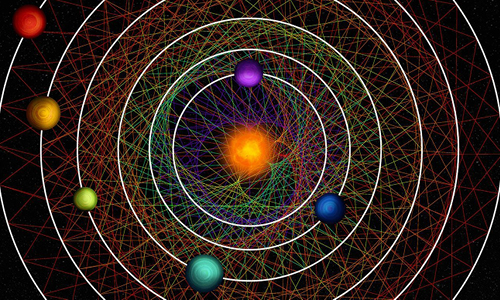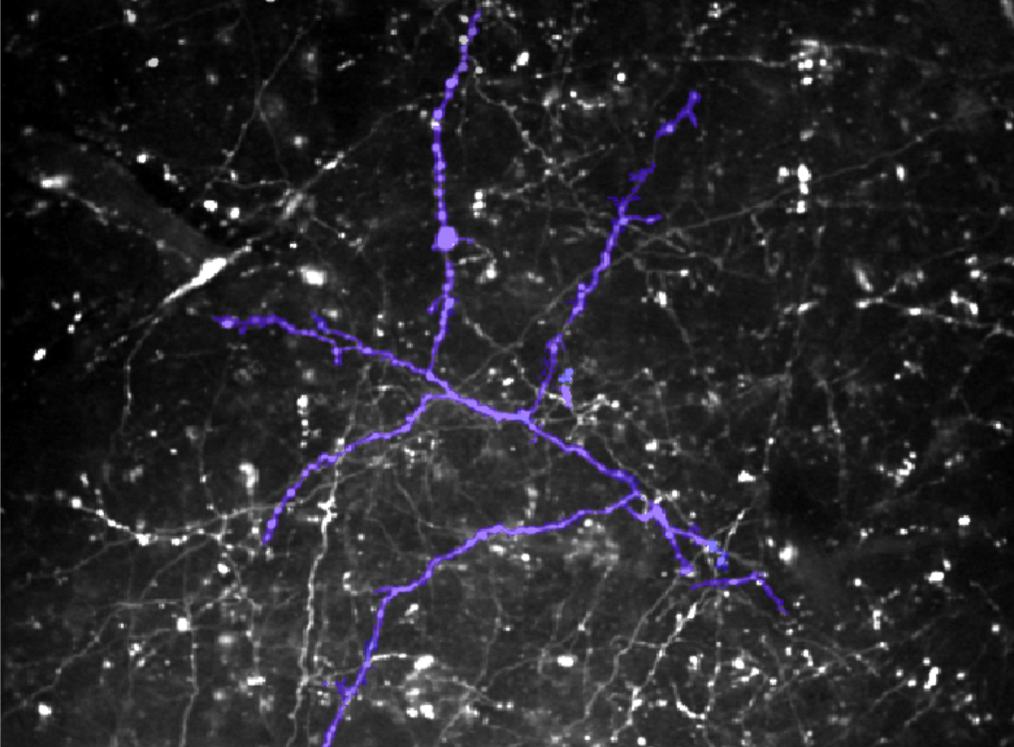|
|
|
|
| |
A synchronous solar system orbits in the same pattern for billions of years, offering insight into planet formation. A neural pathway offers new clues on the connection between fear and memory. Read these top research stories—and more of the latest in science news—in the December edition of µChicago. |
|
| |
|
|
|
| |
A dance to the music of the spheres |
|
| |
|
|
|
|
|
| |
| |
|
|
| |
Each of the six planets in this system orbits around the central star in an exact pattern proportional to the size of its orbit path. (Image by Thibaut Roger/NCCR PlanetS, CC BY-NC-SA 4.0) |
|
| |
|
|
|
|
| |
|
|
|
| |
UChicago astrophysicists identified a rare gravitational formation, known as resonance, in a six-planet solar system originally discovered by NASA in 2020. Each planet orbits around the central star in a synchronous pattern so exact that the system keeps time when set to music. While solar systems are thought to begin in resonance, their patterns usually become disrupted by rogue space objects. Observing this untouched system may enable researchers to better understand how planetary systems form and evolve. |
|
| |
|
|
|
|
|
| |
Small solutions, powerful payoff |
|
| |
|
|
|
|
|
|
|
| |
|
|
|
| Got TVA? Trans-vaccenic acid—a fatty acid found in certain dairy and meat products—shows promise in boosting immune cells’ tumor-fighting ability and could be used as a nutritional supplement for cancer patients in clinical treatment. |
|
|
|
| |
|
|
|
|
|
| |
|
|
|
| Diamond in the bit: To simplify quantum network operation, a team at the Pritzker School of Molecular Engineering altered the atomic structure of diamond qubits, making them more temperature stable and easier to manipulate. |
|
|
|
| |
|
|
|
|
|
| |
Fear and forgetting in neural circuitry |
|
| |
|
|
|
|
|
| |
| |
|
|
| |
A connection between the nucleus reuniens (the NR; highlighted in purple) within the thalamus and the CA1 region of the hippocampus may facilitate the repression of fear memories. (Mark Sheffield/Biological Sciences Division) |
|
| |
|
|
|
|
| |
|
|
|
| |
A specific and understudied neural circuit helps the brain suppress unnecessary fear responses, according to a new study by neurobiologists at UChicago. A route of communication between the thalamus and the hippocampus, the NR-CA1 pathway speeds up “extinction learning”—the process by which fear responses fade—and could play a vital role in treatments for conditions such as generalized anxiety and post-traumatic stress disorder. |
|
| |
|
|
|
|
|
|
|
|
|
|
|
|
|
| |
| |
Visit the Alumni & Friends website for stories, podcasts, and other features, curated for you on UChicago Review. Create an account for a more personalized experience.
|
|
|
|
| |
|
|
|
|
| |
| |
Sign up to receive µChicago monthly. |
|
|
|
| |
|
|
|
|





